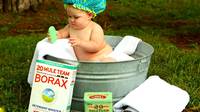
State of Consciousness
Because of the relatively undeveloped state of the most important sense organs – the eyes and the ears – one could not logically expect newborn infants to be keenly aware of what goes on around them. Their awareness is more likely to be “one great blooming, buzzing confusion,” as James has described it.
As was pointed out earlier, all infants experience some disorganization for the first day or two after birth. This would suggest that they are not entirely conscious of what goes on around them. Gradually, as the shock of birth wears off and their sense organs begin to function better, they become more conscious of their surroundings.
The consciousness of the infant is markedly influenced by the depressant effects of drugs used during labor, and these effects persist longer than in adults. Prematurely born infants take longer to adjust to the ordeal of birth than full-term infants whose birth has been difficult. Consequently, it takes them even longer to become conscious of what goes on around them.
Capacity for Learning
To learn, individuals must be aware of what they are expected to do. Furthermore, the brain and nerves must be developed enough to make learning possible. These conditions do not exist in newborn infants, especially during the first few days of postnatal life. Newborn infants are often incapable of even the simplest form of learning – conditioning or learning by association. With the possible exception of the feeding situation, conditioned responses are difficult to elicit. When they do appear, they are unstable and of little permanent value.
Emotions of the Newborn
In view of the incoordination that characterizes the activities of the newborn infant, it would be illogical to expect specific, identifiable emotions to be present at birth. Instead, emotional reactions may be described as states of pleasantness and unpleasantness. The former is characterized by a relaxing of the body and the latter by a tensing of the body.
The outstanding characteristic of the infant’s emotional makeup is the complete absence of gradations of responses showing different degrees of intensity. Whatever the stimulus, the resultant emotion is intense and sudden.
Beginnings of Personality
Children are born with characteristic temperamental differences that are reflected in activity rates and sensitivities. It is these differences from which the individual’s personality pattern will develop. Individual differences are apparent at birth and are shown in responses to food, in crying, in motor activities, and especially in sleep.
Personality, like other physical and mental traits, results from the maturation of hereditary traits. Thomas et al. have commented on the importance of the interrelationship between maturation of hereditary traits and experiences in the development of personality thus: “If the two influences are harmonized, one can expect healthy development of the child; if they are dissonant, behavioural problems are almost sure to ensue”.
As early as the neonatal period, a number of factors influence the infant’s developing personality. A disturbed prenatal environment, which can result if the mother is subjected to severe or prolonged stress, for example, may cause a modification of the new-born infant’s behaviour pattern. Such disturbances are especially important if they occur during the latter part of intrauterine life and may cause a state of hyperactivity and irritability in the newborn.
There is little evidence that the birth trauma, or psychological shock that results when the infant is separated from the mother, has any lasting effects on personality, as Rank claimed. There is evidence, however, that infants who are separated from their mothers after birth do not make as good an adjustment to postnatal life as infants who remain with their mothers.
There is also evidence that mother’s attitudes toward their infants, which are reflected in their behaviour, influence the development of the infant’s personalities. For example, if a mother suspects that there is something the matter with the infant, her reaction is likely to be confused and unstable, shifting from day to day or even from hour to hour.

















